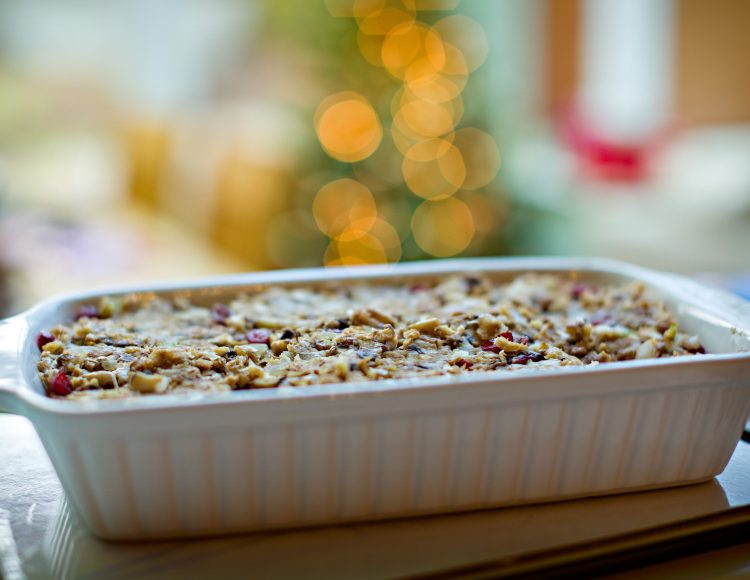This year celebrates 50 years since the London and Manchester Vegetarian Societies merged. It marked an important time when bonds were made and the two societies began to work together. Looking back at the archives got us thinking about how things have changed. Vegetarian Society member and fifth generation vegetarian, Jane Carter from Leicester, told us what being veggie was like at the time.
—
By Jane Carter
Growing up in the fifties and early sixties meant everything was invariably homemade. Flapjack and shortbread, date slices were always in the tin, and homemade cakes at weekends.
We were a family of six vegetarians. My siblings and I were fifth generation, I believe, thanks to a great- great- grandmother who visited a slaughterhouse and vowed never to eat animals again.
As children we ate well. It was good, fresh, wholesome food and as a rule we were all fit and healthy.
So what did we eat?
Basic shopping list
Grey Friars health store was the main one in Leicester. My mother placed a regular order, which was delivered. Alongside our usual staples of oats, nuts, pasta, cocoa, dried fruits, beans and lentils, and pasta, there were a few more unusual ingredients that are rarely seen on the shelves now.
- Yeastrel: a yeast extract that’s no longer available
- Granose Meatless Steaks: a gluten now sold as Mock Duck
- Nutmeat: Sausalatus and Sausalene (sadly no longer available)
- Rissolnut and Mapleton’s Savormix (see Christmas dinner)
- Tartex pate in a tin (not a tube as it is today).
- Fruitarian cake: a blend of dried fruits, pressed into a block
- Butter: Kraft made a vegetable margarine and Blue Band was good to spread
- Nutter and Suenut: solid vegetable fats for baking and roasting
- Here’s Health and Health for All: magazines about healthy living, diet and exercise
And of course, in the fifties, dry goods came in blue or brown paper bags.
Vegetables and fruit were bought from the local greengrocers, so were always seasonal. In autumn, it was boxes of apricots, pears, plums, damsons and tomatoes – bottled and ready for use in winter.
Breakfast
Breakfast was often Weetabix, Shredded Wheat, Puffed Wheaton Force, Wheat Flakes, or oats. Muesli was made by soaking oats overnight then adding a spoon of condensed milk, lemon juice and freshly grated apples. In the winter, we opted for porridge with the ‘top of the milk’ or evaporated milk.
School dinners
Vegetarians were not very well catered for… Eggs baked in nests of mashed potato, cheese and potato pie, cheese and egg flan, or being expected to pick the vegetables out of the meat stew! Then macaroni or cauliflower cheese, often on a Friday when meat wasn’t served.
Evening meal
Our main meal was usually early evening after school. We had lentil bakes, risotto, vegetable pies, and various types of quiche. Winter meant casseroles with butter beans, haricots, lentils or barley – sometimes with dumplings made with Nutter or Suenut. And occasionally a family-sized omelette!
Nuttolene, Sausalene or nutmeat were simply fried or sometimes coated in batter. Sausalatus were lovely fried – they always stuck, but they made a good toad in the hole with Marmite gravy.
Sunday lunch
Sunday lunch was often nut roast or savoury bake with all the trimmings. Invariably there was a pudding: steamed pudding with fresh lemons and golden syrup, apple fritters and custard, or cold chocolate dessert made with cocoa, sugar and milk and set with agar agar or Cellozone.
Christmas dinner
Christmas dinner was a huge nut roast made with a Savormix, groundnuts, tinned tomatoes cooked with onions, mixed herbs, and then it had a thick layer of fresh sage and onion stuffing in the middle. It sliced really well for Boxing Day to eat with pickles and salad!
Drinks
My mother made a tonic drink using a pint of chilled milk. She added a spoon of brewer’s yeast, a tablespoon of molasses and a couple of scoops of Cow and Gate milk powder. It was all blended together and was a good source of iron, B vitamins and calcium.
Eating out
If we ate out the only offerings seemed to be eggs, omelette or cheese on toast. There was an excellent vegetarian guesthouse in Swanage called Goldings. They made a lovely spiced shortbread called Waveney X Special.
And now?
Today there is such a wide range of fruit and vegetables, which makes interesting meals easier to do. We have plenty of options with dried soya chunks or mince, a wide range of Quorn and meat-free burgers and sausages for those who want to give up meat but want to do it gradually.
—
What’s your story?
If Jane’s story has brought back memories, we’d love to hear them. Help us celebrate these 50 years by sharing your story. What was life like as a veggie in the 60s? How has it changed now? Let us know!

